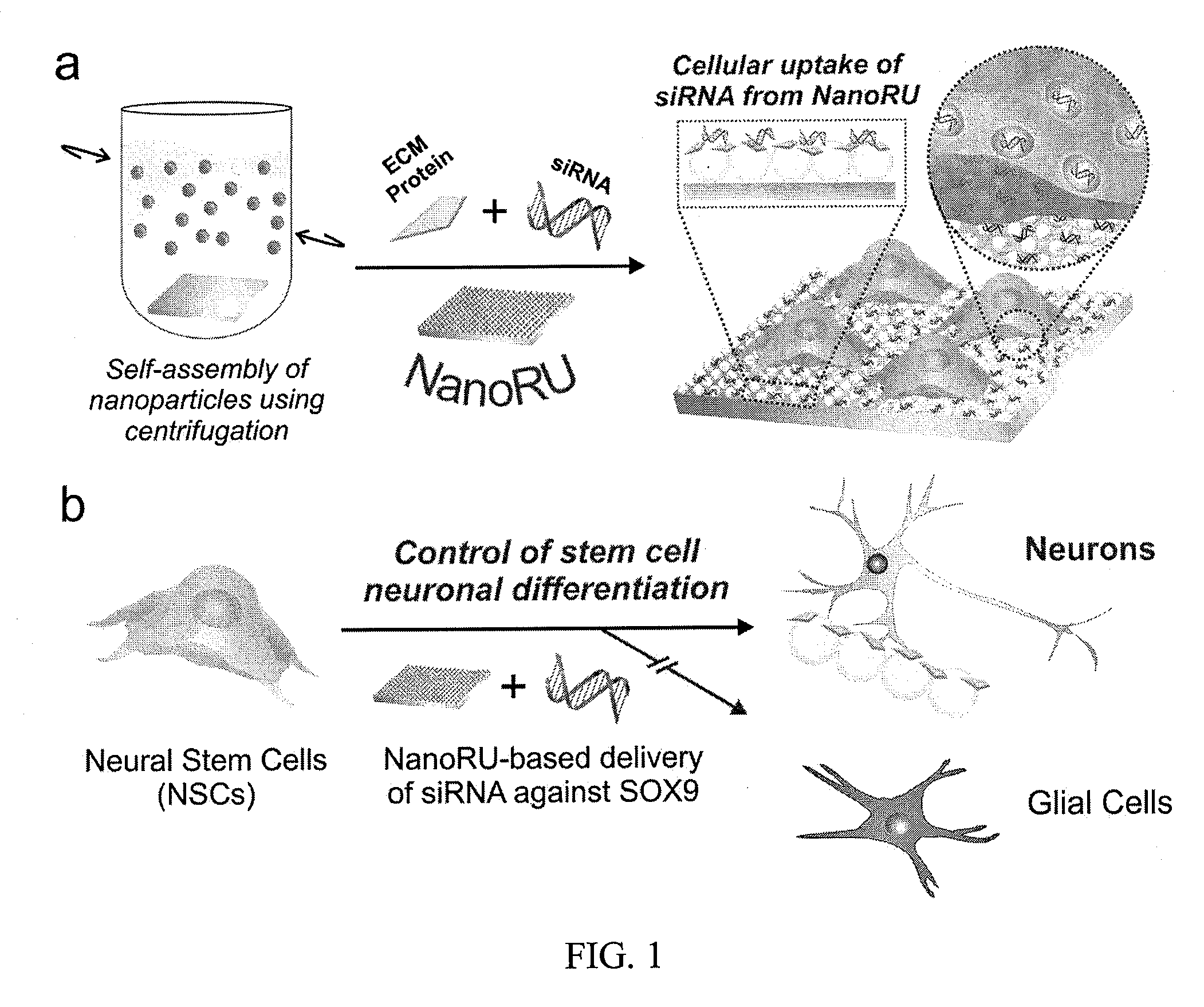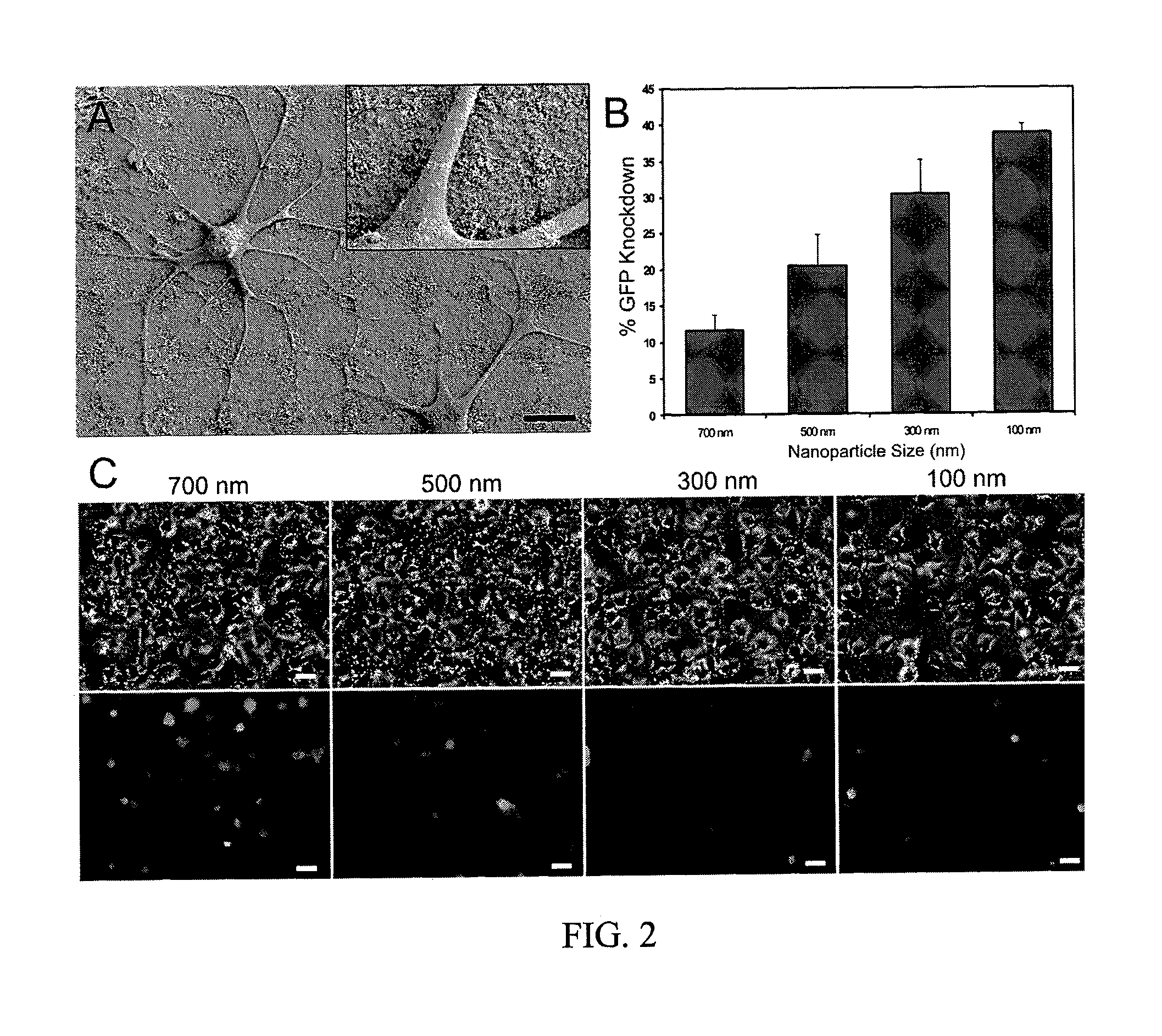Nanotopography-mediated reverse uptake platform for nucleic acid delivery and applications thereof
a reverse uptake platform and nucleic acid technology, applied in the direction of capsule delivery, microcapsules, organic chemistry, etc., can solve the problems of high cell death, unsatisfactory stem cell viability, and tend to die or undergo undesired differentiation patterns, etc., to achieve non-toxic and high-efficiency effects
- Summary
- Abstract
- Description
- Claims
- Application Information
AI Technical Summary
Benefits of technology
Problems solved by technology
Method used
Image
Examples
examples
Methods
Generating Nanoparticle Films
[0077]Polycrystalline Au films were prepared by thermally depositing ˜5-6 nm thick Ti layer followed by ˜10-20 nm Au deposition on cover glass substrates (Fisher No. 1) under a high vacuum condition (base pressure ˜5×10−6 torr). For generating films of nanotopographical features, silicon oxide nanoparticles (SiNPs, Corpuscular Inc) of different sizes were utilized. The gold-coated cover slips were first functionalized with self-assembled monolayers (SAMs) of negatively charged 16-mercaptohexadecanoic acid (MHA, Sigma) using microcontact printing. Flat PDMS stamps were inked with 5 mM ethanolic solution of MHA and the Au-coated substrates were stamped for 5 s. The substrates were then washed with ethanol and dried under a nitrogen stream. Alternatively, the substrates could also be functionalized by simply incubating in 5 mM ethanolic solution of MHA overnight. The substrates were then centrifuged at 1000 RPM for 1 min in a 2 mL eppendorf tubes con...
PUM
| Property | Measurement | Unit |
|---|---|---|
| sizes | aaaaa | aaaaa |
| sizes | aaaaa | aaaaa |
| size | aaaaa | aaaaa |
Abstract
Description
Claims
Application Information
 Login to View More
Login to View More - R&D
- Intellectual Property
- Life Sciences
- Materials
- Tech Scout
- Unparalleled Data Quality
- Higher Quality Content
- 60% Fewer Hallucinations
Browse by: Latest US Patents, China's latest patents, Technical Efficacy Thesaurus, Application Domain, Technology Topic, Popular Technical Reports.
© 2025 PatSnap. All rights reserved.Legal|Privacy policy|Modern Slavery Act Transparency Statement|Sitemap|About US| Contact US: help@patsnap.com



